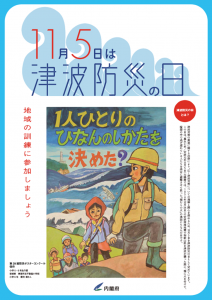
Tsunami Awareness Day
Yesterday, the United Nations Office for Disaster Risk Reduction (UNISDR) welcomed the resolution adopted by the General Assembly recognizing November 5 as World Tsunami Day. “Many disasters would not happen and many lives and livelihoods would be saved if there was greater public awareness of the threats posed by natural hazards such as tsunamis,” Margareta Wahlström, the Secretary-General’s Special Representative for Disaster Risk Reduction, said in a statement, welcoming the designation of the day as a “welcome step.”
“It will help to focus attention on measures which can be taken to reduce risks from both man-made and natural hazards and to ensure that more people live and work in places which are free from the threat not just of tsunamis but other sudden onset hazards such as earthquakes, floods and storms.”
The proposal was first suggested by the Japanese Government after the Third UN Conference on Disaster Risk Reduction held in Sendai in March this year.
Japan has suffered heavy losses as a result of tsunamis, most recently the Great East Japan Earthquake and Tsunami of March 11, 2011, which claimed over 15,000 lives, disrupted the nuclear power industry and left many thousands homeless.
“It should be remembered that the 2004 Indian Ocean tsunami which claimed some 230,000 lives from countries across the world galvanized political commitment to reducing disaster risk and disaster losses,” Ms. Wahlström added.
“The memory of that event helped to ensure the adoption of the Sendai Framework for Disaster Risk Reduction this year which sets targets for the first time on reducing mortality, the numbers of people affected, economic losses and damage to critical infrastructure from disasters.”
Owing to Japan’s experience with tsunamis, the country is better prepared than most to reduce the risks, operate early warning systems and educate the public about safety measures when a tsunami alert is called. Countries lacking recent experience with tsunamis, such as our own, are likely not as well prepared and owe a debt to Japan for raising global awareness of this serious hazard.


